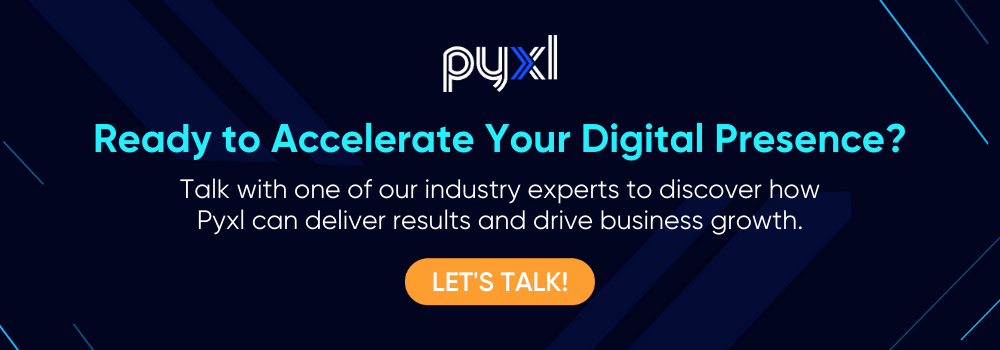Using Marketing Attribution to Measure Marketing ROI
To stay competitive and relevant in today’s digital environment, marketers have become more involved with different channels and different strategies to try and attract their target audiences from a wider span. It can be challenging for a marketer to know exactly where to focus all their efforts. “Am I reaching my target audience? Am I attracting quality leads? Are my leads converting into sales?” To properly understand and measure your marketing channels’ ROI, marketers need to know where the leads are coming from and why they chose to convert.
How can marketers measure the ROI of their marketing efforts? According to Pyxl’s 2021 Digital Marketing Survey Report, most marketing teams are looking to use attribution marketing methods to measure the effectiveness of their marketing strategies in 2021.
What is Attribution Marketing?
Digital marketing attribution is how marketers can access each of their marketing channels’ value and designate which channels have the highest ROI for connecting to their potential customers. It can help determine what types of content your potential customers like, how they want to communicate with your business, and what makes them convert into customers.
Why is it Essential to Use Attribution Marketing to Understand the ROI of Your Marketing Channels?
Marketing ROI is the practice of attributing profit and revenue growth to the impact of marketing initiatives. This practice allows marketers to calculate which marketing efforts and content contribute to their business’s revenue growth.
Determine marketing budget:
Marketing ROI is integral to justifying marketing spending and the ongoing budget for future campaigns. The use of marketing spending is best when allocated to efforts that bring in the most revenue. Marketing attribution allows marketers to see what channels convert the most clients to determine where marketing resources should be allocated.
For example, suppose a paid media campaign has brought in revenue for the business and had high conversion rates. In that case, the marketing budget should allocate more dollars to paid media campaigns in the future.
Increase ROI:
Digital marketing attribution can uncover specific strategies and efforts to increase conversions and increase your ROI. According to iProspect, “the typical outcome of implementing attribution is a 15-35 percent gain in media efficiency and corresponding increases in ROI”.
Understand your target audience better:
Knowing your marketing channels’ ROI can also contribute to a better understanding of how to reach specific audiences at the right time with the right content. A couple of questions you should consider are: “What channels do my contacts prefer? What type of content leads to better quality conversions? and How are my contacts finding my content?”
For example, you realize you are receiving more customers through LinkedIn than any other social media channel. This data may suggest that you focus more on your efforts on posting and nurturing relationships on LinkedIn than on different platforms. And maybe try new methods such as LinkedIn ads.
All of those strategies of marketing attribution help set a baseline for future campaign success. This repetition makes it easier to track and monitor certain content and platforms that generate the most customers.
How to Choose the Right Attribution model
77% of marketers believe that they are not using the suitable attribution models or don’t know how marketing attribution can help them succeed. Choosing the right model is crucial to ensure your data is accurately measuring the effectiveness of your efforts.
There are a variety of digital marketing attribution models that work well for different types of businesses. Here are some examples of different types of attribution models marketers can use to measure the ROI of their efforts:
1. First Touch Attribution
- Focuses on giving credit to the first marketing effort that drove the visitor to look at a piece of content.
- Easy to implement but is susceptible to channel bias.
- Ex: A majority of your contacts first interacted with a blog on your website, so you spend more time and resources writing blogs.
2. Lead Creation Touch Attribution
- Focuses more on lead generation and the lead on the marketing platform.
- It helps you understand what marketing channels are driving conversions.
- Ex: When a potential customer fills out a contact form on a webpage, 100% of the value is placed on that contact form.
3. Last Touch Attribution
- Focuses on the last piece of content the customer looked at before converting.
- Ex: A contact filled out a contact form, attended a webinar, and replied to an email campaign where they accepted a sales meeting. This model would attribute the email as 100% of the value of closing the deal.
4. Linear Attribution
- Distributes the credit to every touch in the buyer’s journey.
- Gives equal credit to all the marketing channels used throughout all stages of the funnel.
- Ex: For instance, a potential customer engages with Facebook, looks over several blogs, and attends a webinar. The value would be placed equally between these channels.
5. U-Shaped Attribution
- A multi-touch model that tracks all touchpoints
- Focuses on two critical touchpoints: the first touch and the lead conversion touch.
- For example, a potential customer visits a blog through organic search then fills out a form for an infographic. The model would split the value between those two touchpoints.
6. W-Shaped Attribution
- A similar process to the U-shaped attribution
- includes the opportunity along with the first and lead creation in terms of tracking touchpoints.
- The three touchpoints receive equal credit.
- When the potential customer visits a blog through organic search, fills out a form for an infographic, then fills out a demo request, this would split the value between these three touchpoints.
7. Full-Path Attribution
- Accounts for the entire buyer’s journey when addressing touchpoints.
- Each four key stage touchpoints receive equal value.
- For example, a potential customer views a webpage, fills out a content download form, engages with social media, asks for a demo request, and completes a sale. All of these steps are split equally in a full-path attribution model.
Partner with Pyxl
Need help determining the appropriate attribution marketing model for your business? Pyxl uses data-driven insights to achieve a fully functioning model for your company. Contact our team today to learn more.
Updated: Apr 13, 2022
 Bonnie Winter
Bonnie Winter

 Kati Terzinski
Kati Terzinski